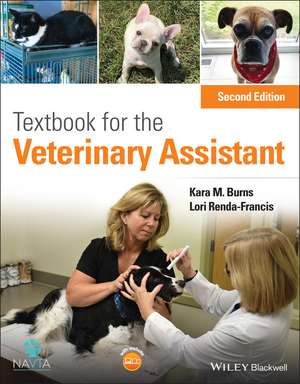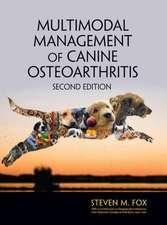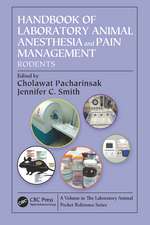Textbook for the Veterinary Assistant
Autor KM Burnsen Limba Engleză Paperback – 20 feb 2022
Preț: 484.42 lei
Preț vechi: 509.91 lei
-5% Nou
92.70€ • 99.12$ • 77.29£
Carte disponibilă
Livrare economică 27 martie-10 aprilie
Livrare express 13-19 martie pentru 41.47 lei
Specificații
ISBN-10: 1119565316
Pagini: 224
Dimensiuni: 217 x 276 x 12 mm
Greutate: 0.64 kg
Ediția:2nd Edition
Editura: Wiley
Locul publicării:Hoboken, United States
Cuprins
Descriere
A fully updated new edition of the most complete guide to the veterinary assistant curriculum The newly revised Second Edition of Textbook for the Veterinary Assistant delivers a complete exploration of the veterinary assisting curriculum and acts as a comprehensive text for students and instructors. The book discusses all aspects of the curriculum approved by the National Association of Veterinary Technicians in America. The book is thoroughly updated to reflect cutting-edge advances in veterinary practice and includes a new chapter on laboratory considerations and an updated chapter on avian and exotics covering popular exotic pets. Readers get access to an expanded companion website that offers teaching PowerPoints, homework assignments, self-assessment tests and quizzes, multiple-choice questions, teaching activities, breed study guides, and instructional video clips. Textbook for the Veterinary Assistant also includes: * A thorough introduction to medical terminology for veterinary assistants, including prefixes, suffixes, and common abbreviations used in veterinary medicine * Comprehensive explorations of veterinary anatomy, including anatomical directional terms and all relevant anatomical systems * Practical discussions of the behavior, handling, and restraint of animals, including explorations of animal body language * In-depth examinations of animal nutrition, including discussions of weight management, body condition scoring, and food assessment Textbook for the Veterinary Assistant is the ideal resource for veterinary assistant students and veterinary assistants studying for the NAVTA Approved Veterinary Assistant exam, as well as practicing veterinary assistants seeking a one-stop resource that includes up-to-date information on topics such as restraint, behavior, nutrition, anatomy, and laboratory considerations. It is also useful for veterinary technology students in introductory courses.




